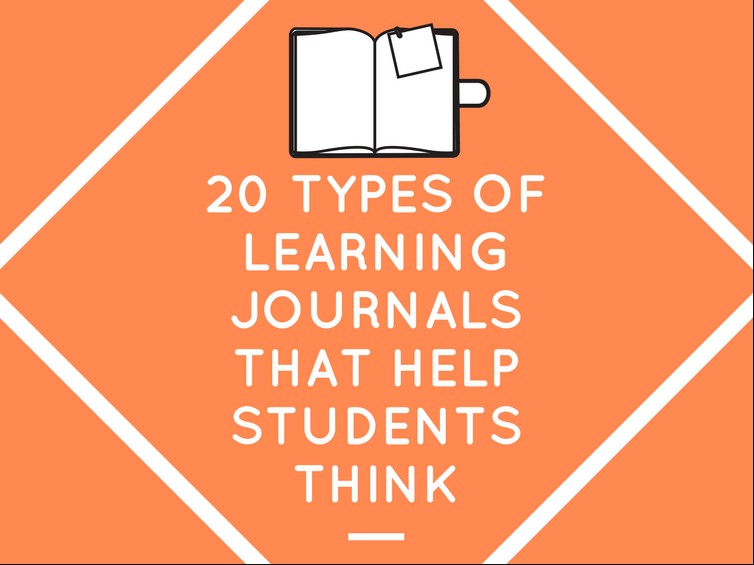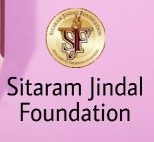
A learning journal is simply an ongoing collection of writing for learning–that is, writing done for the purpose of learning rather than the purpose of demonstrating learning.
Learning journals are often named for a specific purpose and/or format–a creative writing journal, for example. Even a personal blog is a kind of journal, and can thus become a learning journal if the blogging is done in order to promote, deepen, or extend learning of some kind.
There are as many types of learning journals as there are ways to think, mainly because writing is a powerful strategy for both documenting and promoting thinking. Below are 20 types of learning journals–in this case, learning journals that promote thinking.
Of course, it is slightly redundant to specific writing that promotes thinking because writing is simply the manifestation of thinking. All writing, to some degree, requires thinking. However, the types of learning journals listed below have been chosen for their particular talent in helping students think.
Note, there’s no reason you can’t combine many types of journals into one, thinking of journal types like categories on a website or sections of a magazine. This would be especially beneficial for younger writers who may easily tire–and thus not benefit from–a pure Transfer Journal.
You can also use this approach to personalize learning for students. If you know one student may benefit from sketch notes and ‘I wonder…’ journaling while another may be more inclined towards metacognition and connecting, by all means, adapt the journal to the student and not the other way around.
20 Types Of Learning Journals That Help Students Think
1. Question Journal: This type of journal is focused on inquiry–the asking and refinement of questions. They can be answered or merely ‘wondered about.’ The big idea here is students asking and improving their own questions. The QFT Strategy could be useful here.
2. Metacognitive Journal: A journal focused on thinking about thinking. In a Metacognitive Journal, students are writing about their thinking–their tendencies, changes in their thinking over time, cognitive blind spots, etc.
3. Change Journal: All learning should result in personal and social change. Similar to the ‘change in thinking’ topic in the Metacognitive Journal listened above, a ‘Change Journal’ frames the writing for learning in terms of, well, change.
How has their knowledge changed after a lesson or project–how it is now more complete or useful, for example. Change in their own behavior as the result of their learning is another possible approach. That is, how is or should their own inclinations or skills or general potential different post-discussion/lesson/project/unit. Writers can also reflect on how other knowledge (about other topics, for example) as changed after encountering new data or ‘finishing’ a learning experience of some kind.
4. Connecting Journal: A learning journal that frames writing through the connections between things. For example, in science this could be writing about how new knowledge about the scientific process connects to old perceptions. Or, less abstractly, learners could simply write about how the scientific process connects to data, business, technology, or science itself at large.
A Connecting Journal, more than anything else, requires writers to make, focus on, or otherwise frame their thinking through connections. In this way, it pairs well with a ‘Sketch Note’ Journal, which would allow students to make those connections through prose as well as drawings or concept maps.
5. Transfer Journal: A journal that focuses on learners transferring their learning–to new and unfamiliar circumstances in the strictest sense. If a student learns about migration in social studies, a Transfer Journal would allow them to consider how that knowledge might be used, or how it might transfer to current events, for example.
It could also focus on transfer from within the classroom to outside the classroom, making explicit the learner’s application of academic and content knowledge in their own lives.
6. ‘I wonder…’ Journal: A learning journal similar to the Question Journal, the ‘I wonder…’ journal would likely feature less detailed and more imaginative entries based on student wondering and musing.
‘I wonder…if Pythagoras based his theory on something he had recently learned himself?’
‘I wonder…if literary symbolism is what makes hip-hop so powerful, or if it’s more word play and ‘sounds?’
‘I wonder…how often Tesla shocked himself?’
7. ‘I notice/I think…’ Journal:
8. Visualization Journal: A type of learning journal that promoted acute and specific visualization of learning, knowledge, etc. This could be students creating visual metaphors for the function of something they’ve just learned–the revision stage of the writing process, for example.
In a Visualization Journal, a student would create a visual metaphor or analogy about how the revision stage functions–what it ‘does.’ One response might be students drawing construction workers renovating a building–changing drywall or painting the outside of a home a new color. This would distinguish it from the editing stage of the writing process, which includes more minor changes often based on language conventions. A suitable visualization for editing might be someone redecorating a room.
9. Doodle Journal: A type of learning journal that is similar to ‘I wonder…’ in its disarming form. Here, students merely doodle about their learning/learning experience, with no requirement other than being able to explain why they drew what they drew. This can be useful for hesitant writers who also believe they ‘can’t draw.’
10. Concept/Example Journal: A type of learning journal that promotes thinking through concepts (abstract) or thinking through examples (concrete). Learning about gravity in science class? Learners can write about gravity as a kind of concept, especially in relation to other concepts–momentum or centrifugal force, for example. (This is similar to the Connection Journal.)
But they can also simply write about examples of gravity, which is more visible, immediate, and ‘easier’ for learners with emerging knowledge.










